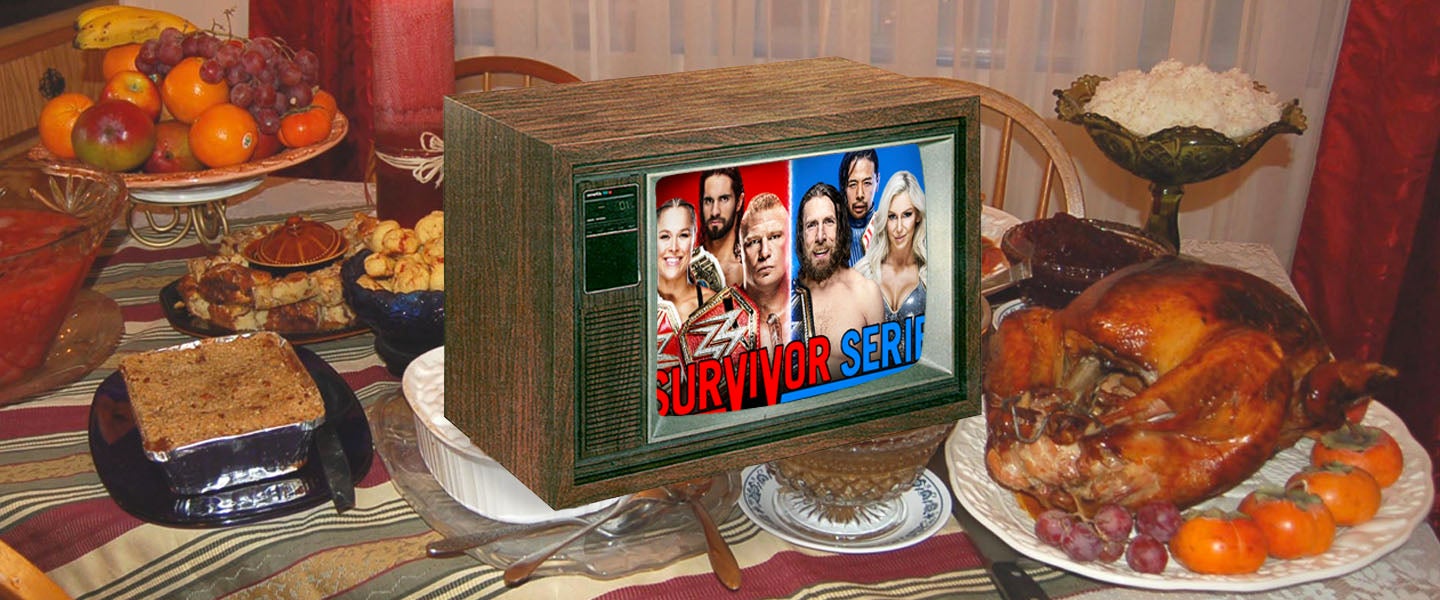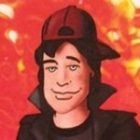When it comes to sports on Thanksgiving, most people will immediately think of football. For many years, though, there was another. Well, sort of: Professional wrestling.
The root of it was twofold: Back in the day, holidays were big money nights for wrestling promoters. As dark an evening as it is for live entertainment these days, Christmas night was gigantic, which makes perfect sense when you think about it. Not only could parents get their kids tickets as presents, but said kids were also off from school and didn’t have to worry about waking up for school the next day. It’s also a holiday that peaks pretty early in the morning, so why not go out and have some fun a dozen hours later?
“You had no competition on those nights,” explains Southern wrestling historian Beau James. “Very few people had to work, so you had a chance of drawing the biggest houses of the year, because your potential audience was bigger than normal.”
Thanksgiving night wrestling was similar to Christmas, but more uniquely Southern, as the incredibly early dinner that families are used to in the South isn’t exactly a common occurrence on the coasts. Most families may start earlier than their normal dinner time on Thanksgiving, but as a tradition going back to farmers who still needed to get work done before dark, Southerners start on their turkey even sooner. In strong wrestling cities, this meant that, once again, there wasn’t much to do after sundown.
While there were others, the consensus legendary Thanksgiving tradition in pro wrestling was the one upheld by Jim Crockett Promotions, which mainly ran shows in the Carolinas and Virginia. There were certainly small towns that were technically stronger per capita for pro wrestling, but there was nothing quite like Crockett’s best markets anywhere else in the country. Greensboro, North Carolina, was often the most successful city on the whole circuit, but had half the population of Charlotte. There were not a lot of cities in the country that could draw 10,0000-plus fans to a wrestling event with much regularity, but Greensboro was one of them.
Already among the more successful successful regional promotions, the Crockett group got a major makeover in the mid-1970s. Unlike most regional territories, where everyone moved fairly regularly, either uprooting their families or electing not to bring them to every new circuit, wrestlers were encouraged to put down roots with a promise of greater job security. J.J. Dillon, for example, was a mid-level wrestler at best when he went through the area in the early 1970s, but he writes extensively in his memoir about being able to put together a run of a few years without having to worry about his next move. When Jim Crockett Jr. took over for his father after his dad’s 1973 death, though, he started bringing in bigger stars, and with the already strong base, it became the best wrestling promotion in the country, thanks in part to the star power of ex-NFL star Wahoo McDaniel and the rise of Ric Flair.
It took a while, however, before Thanksgiving wrestling developed the exact legacy it’s remembered for now. The seeds were first planted in 1983, when Crockett threw a change-up: One particularly big match, Ricky Steamboat and Jay Youngblood vs. Sgt. Slaughter and Don Kernodle in a cage, which had been built to for months, wouldn’t take place in every major stop on the circuit. With only one or two exceptions, it would be stressed that the match would only take place in Greensboro, resulting in a massive turn-away crowd and a huge traffic jam.
It was only natural then to try to capitalize on this type of interest with the biggest Greensboro show of the year: Thanksgiving. And so, like how big boxing matches were handled at the time, Crockett got a satellite uplink and broadcasted the show — the first annual Starrcade event — to arenas and movie theaters via satellite on closed-circuit television. Fans throughout the territory, not just Greensboro, could go to their usual arenas and array of other venues on Turkey Day and join their families for a night of the best wrestling in the world. All told, almost 48,000 fans throughout the Mid-Atlantic states on Thanksgiving 1983 turned out to see Flair regain his world title over Harley Race, Roddy Piper get bloody revenge against Greg Valentine for injuring his ear and much more.
In Year Three, there was a big change. Early in 1985, Crockett gained control of the three wrestling time slots on Atlanta’s Superstation WTBS, which aired nationally on cable. This resulted in an expansion to not just the existing Georgia wrestling territory, but also anywhere with WTBS. With Atlanta also having its own annual Thanksgiving night wrestling tradition at the Omni Arena, the decision was made to split Starrcade in half, alternating matches between venues, an arrangement that continued for 1986.
All the while, Starrcade kept getting bigger and bloodier, with wild matches up and down the cards and huge feature attractions headlining. Dusty Rhodes trying to get revenge on Flair for breaking his ankle in 1985 was big, but The Road Warriors taking on The Midnight Express in a match where the losers were the ones thrown off a scaffold was even bigger. According to the official Midnight Express scrapbook compiled by their manager, Jim Cornette, 1985 drew more than 60,000 fans combined across all locations, paying a total of about $883,700, or over $2 million adjusted for inflation. 1986 sold a similar or slightly larger number of fans paying a total of just over $1 million (over $2.35 million in 2018 dollars).
The Atlanta and Greensboro live events set the gate records for both buildings as well, with the latter lasting a dozen years, only being broken by “Stone Cold” Steve Austin’s first big world title defense after becoming the biggest star in the sport. And even then, adjusted for inflation, Starrcade 1986 beat it by more than $100,000 in 1998 money. The home video — marketed to both consumers and video stores, which wasn’t always common in that era — would go on to become the first wrestling video to sell more than 50,000 units and be certified gold.
In other words, this wasn’t just some sleepy little wrestling show. It was big business. Unfortunately, it was also the beginning of the end.
Starrcade 1987 was to be the first Crockett pay-per-view event, stemming from the massive success of the WWF’s WrestleMania III earlier in the year. The WWF may have been the name brand, with network TV exposure and higher highs, but Crockett’s arena business wasn’t far off, and they were ahead in some areas, like TV ratings for many of their key weekly shows. Even if Starrcade couldn’t approach the sheet scale of WrestleMania (which packed the Silverdome with at least 78,000 fans, sold 450,000 closed-circuit tickets and inspired more than 400,000 pay-per-view buys), their own PPV push should, by all rights, have made big money.
Instead, it all went to shit. For publicity purposes, the show was moved to Chicago, alienating the Greensboro and Atlanta fans. Then the WWF decided to run the first annual Survivor Series at the same time, initially moving Crockett to the afternoon but eventually issuing an ultimatum that killed the Starrcade pay-per-view for most of America. And on the night of, in spite of the two companies’ reputations, the overworked, constantly jet-lagged WWF wrestlers had a better show than the more reliable Crockett crew. Just like that, the Thanksgiving tradition was dead, with Starrcade moving to December and Crockett Promotions being sold to Turner Broadcasting, WTBS’s parent company, birthing World Championship Wrestling.
The WWF took over Thanksgiving night through 1990, before moving to Thanksgiving Eve through 1994, when it abandoned the holiday altogether. Today, in fact, Survivor Series isn’t really viewed as any kind of Thanksgiving tradition.
The WWF may have won the war — both of them, as it bought a dying WCW’s assets in 2001 — but when it decided to run a big Thanksgiving weekend show last year, it wasn’t Survivor Series or even a salute to it. Instead, emboldened by the success of the annual WrestleCade independent show, it ran its own Starrcade. Based on little more than the name and a few special guests being announced, it doubled WWE’s average attendance for non-televised events — wrestling, for one night at least, once again a Thanksgiving draw.

